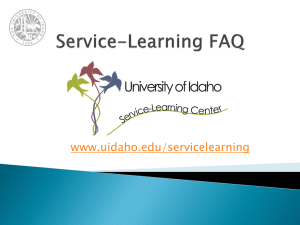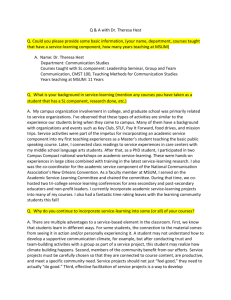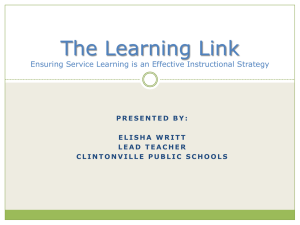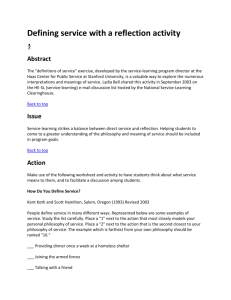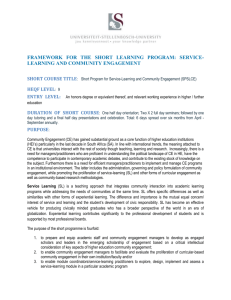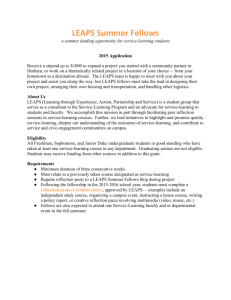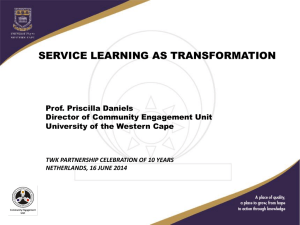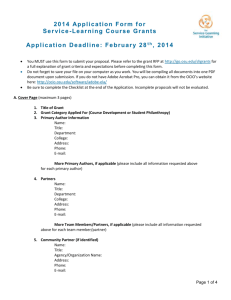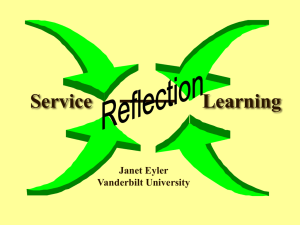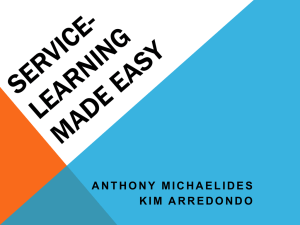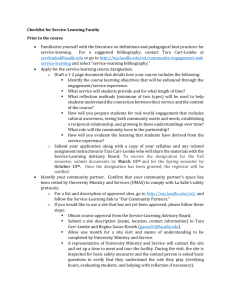AACPS Service Learning Powerpoint
advertisement
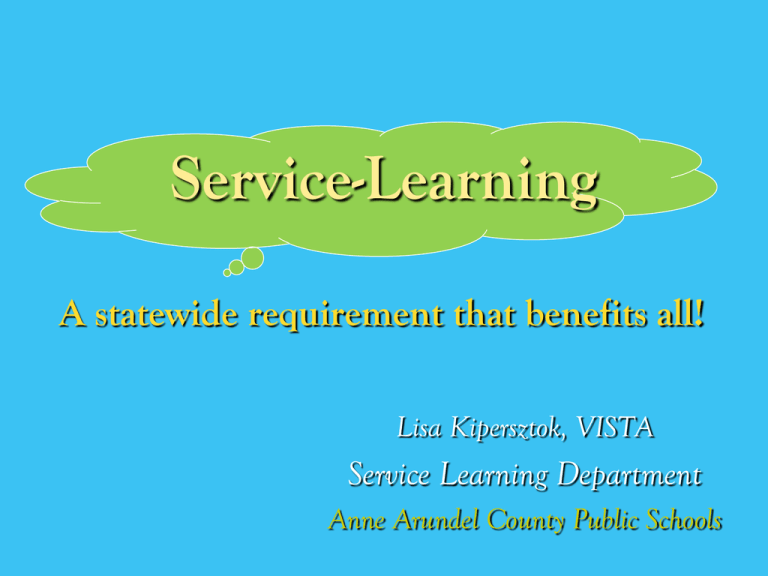
Service-Learning A statewide requirement that benefits all! Lisa Kipersztok, VISTA Service Learning Department Anne Arundel County Public Schools What is Service-Learning? Service-learning is a teaching method that combines meaningful service to the community with curriculumbased learning. Students improve academic skills by applying what they learn in school to real world issues; they then reflect on their experience to reinforce the link between their service and their learning Maryland’s Service-Learning Mission It is the mission of Maryland State Department of Education’s service-learning program to institutionalize high quality service-learning for students in all Maryland K-12 public schools, and to encourage its application in schools across the United States. Maryland Seven Best Practices of Service-Learning 1. Meet a recognized need in the community 2. Achieve curricular objectives through service-learning 3. Reflect throughout the service-learning experience 4. Develop student responsibility 5. Establish community partnerships 6. Plan ahead for service-learning 7. Equip students with knowledge and skills needed for service Code of Maryland Regulation Students shall complete one of the following: 75 hours of student service that includes preparation, action, and reflection components and that, at the discretion of the local school system, may begin during the middle grades; or A locally designed program of student service that has been approved by the State Superintendent of Schools. Service-Learning in Anne Arundel County 75 hours required in order to graduate: 5 hours are done in elementary school in the 5th grade 30 hours are done in middle school 10 in 6th grade 10 in 7th grade 10 in 8th grade 40 hours are done in high school 10 in US Government (9th/11th) 10 in Health (9th / 10th) 10 in Science (10th) 10 in English (11th) Why Service-Learning? Improved Academic Achievement and Engagement* Increased Positive Civic Attitudes and Behaviors* Enhanced Social and Personal Skills* Benefited a wide range of youth** Improved academic achievement** Average Student Helped students learn useful skills** Retention Rates Positive impact on certain risk behaviors** *Corporation for National and Community Service **Brandeis University Service-Learning Study How does service-learning work? Service-Learning has three parts: 1. PREPARATION & RESEARCH 2. ACTION 3. REFLECTION Types of Service Direct Service Tutoring, Mentoring,Visiting the Elderly Indirect Service Drives, Collections, Fundraisers, Clean-ups Advocacy Lobbying, Speaking, Presenting Reflection To explore the impact and importance of citizen service to the community To understand how to learn from experience To develop a language of caring and commitment To instill habits of participation as an expectation of citizenship Attend to broader issues as well as personal experience Encourage creativity Use diverse activities Have students structure some of the reflection sessions “The service you do for others is the rent you pay for the time you spend on earth.” - Muhammed Ali “You make a living by what you get. You make a life by what you give." -- Winston Churchill “You cannot do a kindness too soon, for you never know how soon it will be too late.” - Ralph Waldo Emerson “How wonderful is it that nobody need wait a single moment before starting to improve the world.” - Anne Frank “Thought without practice is empty, practice without thought is blind.” -Kwame Nkkrumah
